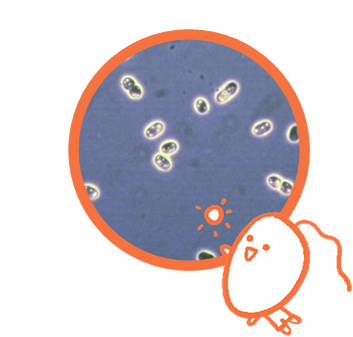April 13, 2018 - What Is EM™?
30 Oct 2018
EM stands for "Effective Microorganisms™". EM consists of a mixed culture of beneficial and naturally-occurring microorganisms most used or found in food industry and agriculture. EM is produced through a natural process and not chemically synthesized and not genetically modified (non-GMO).
Microorganisms in EM
EM is made up of three main genera: lactic acid bacteria, yeast, and phototropic bacteria. These effective microorganisms create beneficial substances such as vitamins, organic acids, chelated minerals and anti-oxidants when in contact with organic matter.

.png)
1. Lactic Acid Bacteria
Lactic acid bacteria convert sugar and other source into lactic acid. Through the production of lactic acid, lactic acid bacteria also inhibit the growth of pathogenic microorganisms. Lactic acid bacteria have been noted for its beneficial effects on health and longevity and it is widely used in making fermented foods such as cheese, yogurt and pickles.
.png)
2. Yeast
A fermentation starter necessary for making bread. Yeast live in sugar-rich environments such as in nectar and the surface of fruits. In EM•1®, yeast produces many bio-active substances such as amino acids and polysaccharides.

3. Phototrophic Bacteria
Phototrophic bacteria utilize solar energy to metabolize organic and inorganic substances and play a major role in nitrogen cycling and carbon cycling. Being one of the oldest living organisms on the planet, it is the essential element of EM because of its ability to balance the other microorganisms to allow them to co-exist.
Microorganisms in EM
EM is made up of three main genera: lactic acid bacteria, yeast, and phototropic bacteria. These effective microorganisms create beneficial substances such as vitamins, organic acids, chelated minerals and anti-oxidants when in contact with organic matter.

.png)
1. Lactic Acid Bacteria
Lactic acid bacteria convert sugar and other source into lactic acid. Through the production of lactic acid, lactic acid bacteria also inhibit the growth of pathogenic microorganisms. Lactic acid bacteria have been noted for its beneficial effects on health and longevity and it is widely used in making fermented foods such as cheese, yogurt and pickles.
.png)
2. Yeast
A fermentation starter necessary for making bread. Yeast live in sugar-rich environments such as in nectar and the surface of fruits. In EM•1®, yeast produces many bio-active substances such as amino acids and polysaccharides.

3. Phototrophic Bacteria
Phototrophic bacteria utilize solar energy to metabolize organic and inorganic substances and play a major role in nitrogen cycling and carbon cycling. Being one of the oldest living organisms on the planet, it is the essential element of EM because of its ability to balance the other microorganisms to allow them to co-exist.

